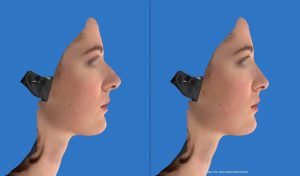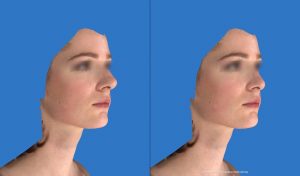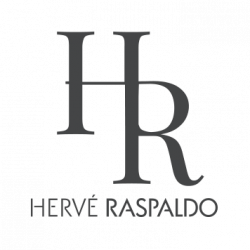Plastic surgery
Nose surgery (RHINOPLASTY)
NOSE SURGERY – RHINOPLASTY

Whether it is too long, too pointy, has a bump or been broken… as the most striking feature on a face, the nose can be a genuine source of woe for many.
Rhinoplasty is the appropriate procedure for anyone who feels unhappy about the shape or size of their nose.
This is a complex procedure that requires skill to produce the desired outcome. This is why it is essential that surgery be performed by a surgeon who is trained and experienced in rhinoplasty.
The aim of the procedure is to improve the visual appearance of the nose and correct certain aesthetic issues. People elect to have rhinoplasty for many reasons:
- For purely cosmetic reasons
- For functional purposes (breathing issues due to a deviated septum, turbinate hypertrophy…)
- Trauma (fractured nose…)
- Malformation.
Nose surgery can be performed through incisions in the nostrils, so there are no external scars. By reshaping with cartilage and tissue, the surgeon can create a nose that looks natural and blends harmoniously with other facial features. At the same time, the surgeon can address any functional issues, which will, if necessary, help restore normal breathing.
Beyond the technically demanding aspect of the procedure, Dr Raspaldo also takes into consideration the psychological and aesthetic benefits that can be gained through surgery. For Dr Raspaldo, this overall approach is essential for achieving a natural, pleasing result that matches the patient’s facial features as well as their personality.
Morphing of a surgical rhinoplasty:


OVERVIEW OF THE PROCEDURE
1ST CONSULTATION:
The first consultation is a crucial stage in the procedure. It enables the patient to tell the surgeon exactly what they want and explain the motivation behind pursuing rhinoplasty. After carefully listening to the patient and gaining an understanding of what they hope to accomplish, the surgeon will develop a feasible aesthetic goal and a surgical plan to achieve it, taking into account the proportions of the face and profile in order to produce natural results.
During this consultation, the surgeon uses computer images to aid in assessment and visualise the desired end result.
The surgeon will provide the patient with a price quotation and make sure they understand everything they need to know about the procedure, including anaesthesia and post-operative care, and address any concerns the patient may have. In 90% of all cases, the incisions for a rhinoplasty are hidden inside the nose.
2ND CONSULTATION:
A second compulsory consultation is scheduled after a ‘cooling-off’ period of at least 2 weeks. This allows the surgeon to answer any remaining questions the patient may have and explain the procedure again, detailing the techniques that will be used, the goals of the procedure, the post-operative care that will be required and the risks involved, so that the patient may make an informed decision. The patient will then be asked to sign a consent form and the written quotation.
MEDICAL CHECK-UP:
Patients must undergo a pre-operative medical check-up and consult an anaesthetist a few days prior to the procedure (at latest, 48 hours before the operation).
THE OPERATION:
Rhinoplasty patients are kept are discharged after between 12 and 36 hours (the operation may be done on an out-patient basis). The procedure is generally performed under general anaesthetic. However, in certain cases (such as tip rhinoplasty, when only the tip of the nose is being modified), surgery may be performed under heavy local anaesthetic. The operation lasts between 1 and 2 hours, depending on the level of enhancement required.
POST-OPERATIVE CARE:
Rhinoplasty is a relatively painless operation. Patients may experience difficulty breathing through the nose for the first two days after the operation.
Bruising and/or swelling around the eyes is normal and will gradually subside within a few days. With Cryotherapy, post-operative bruising and swelling can be reduced by half.
Cotton dressings are no longer used. The 2 nasal packs that are placed in the nostrils will be removed a day or two after the operation
The splint will be removed around seven days after the operation.
It is recommended to refrain from all activity after the operation and rest for a week afterwards.
Sun exposure on the face is strictly forbidden until swelling has disappeared.
Patients can resume normal activities around two weeks after the operation.
Sport and other strenuous activities should only be resumed one month after the operation.
RESULTS:
Results can be seen as early as two weeks after the operation, practically as soon as the splint is removed.
For patients with thick skin or wide nostrils, or those having revision surgery (secondary rhinoplasties), it may take 3 to 6 months for final results to be visible. As a general rule, it normally takes up to a year for the results of nose surgery to be fully visible.
Want to know more?
Need an appointment?

